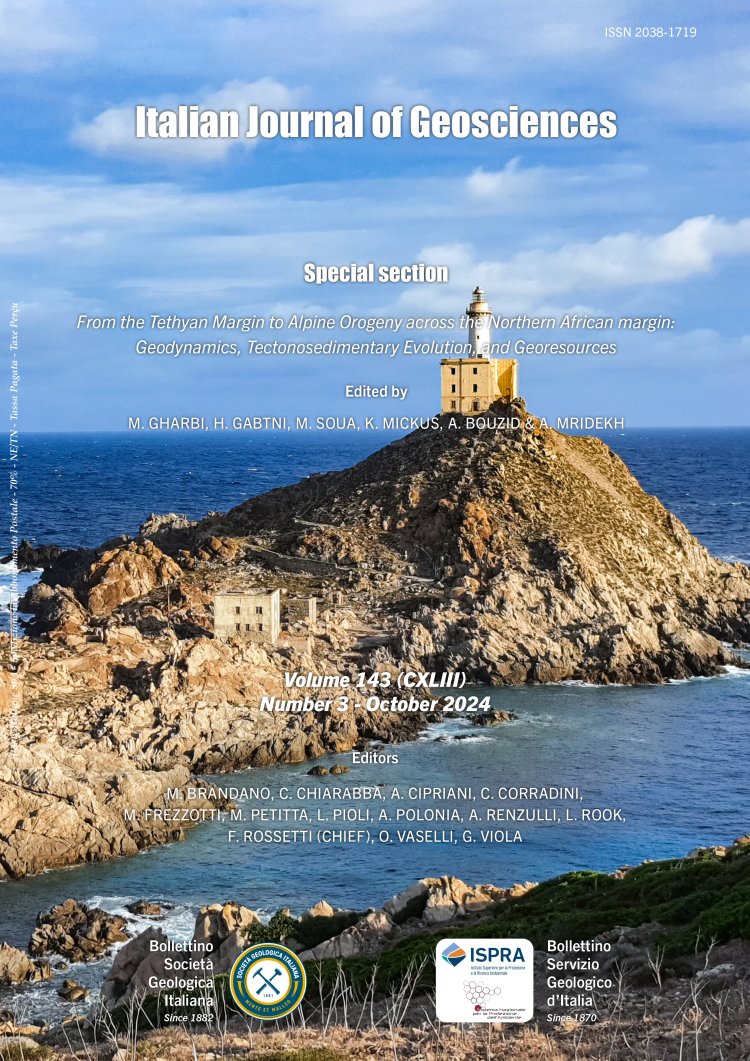
Cretaceous and Cenozoic source rocks maturation modelling in the Gulf of Gabes, central Eastern Tunisia: estimation of hydrocarbon in place
Eya Gasdallah1, Amina Mabrouk El Asmi1, Mohamed Wael Boudegga2 & Moncef Saidi2
1Laboratory of Sedimentary Basins and Petroleum Geology (BSGP), Faculty of Sciences of Tunis, University of Tunis El Manar, 2092 Tunis, Tunisia.
2Entreprise Tunisienne d’Activités Pétrolières, 1002 Avenue Mohamed V, Tunisia.
Corresponding author e-mail: eya.gasdallah@etudiant-fst.utm.tn
Volume: 143 (2024) f.3
Pages: 365-390
Abstract
The present work aims to construct a conceptual model of the thermal history and the expulsion of generated hydrocarbons. This study also aims to assess the unconventional potential of hydrocarbons remaining in source rocks. This research was established on three successions of source rocks: the Albian (Lower Fahdene), the upper Cenomanian-lower Turonian (Bahloul) and the Ypresian (Bou Dabbous), in southeastern Tunisia (Gulf of Gabes). Sediment accumulations, subsidence, compaction, uplifting and erosion have severely affected the aforementioned successions in the Gulf of Gabes basin, and have controlled the maturity trends of source rocks.
Therefore, a number of calibrations were conducted to make adjustments of various temperatures in order to develop the optimal conceptual heat flow model. Thermal maturity modelling, carried out on oil/gas wells in Gulf of Gabes basin, indicates that the Lower Fahdene and the Bahloul successions correspond to mature source rocks with significant hydrocarbon generation potential. However, the Bou Dabbous shows a less mature stage. The seismic cross-sections calibrated with sparse well data, were used to choose pseudo-wells within more subsident areas. Results show a higher maturity of source rocks within graben structures, but expulsion occurred in almost all modelled wells. The Lower Fahdene, Bahloul, and Bou Dabbous source rocks have generated 44%, 56%, and 18% of their total potential, respectively. These source rocks still have substantial retained hydrocarbon, which can be considered as unconventional hydrocarbon reserves.
Keywords
Gulf of Gabes, Lower Fahdene, Bahloul, Bou Dabbous, Basin modelling, unconventional hydrocarbons, seismic interpretation, maturity maps.
Get Full Text Supplementary Material